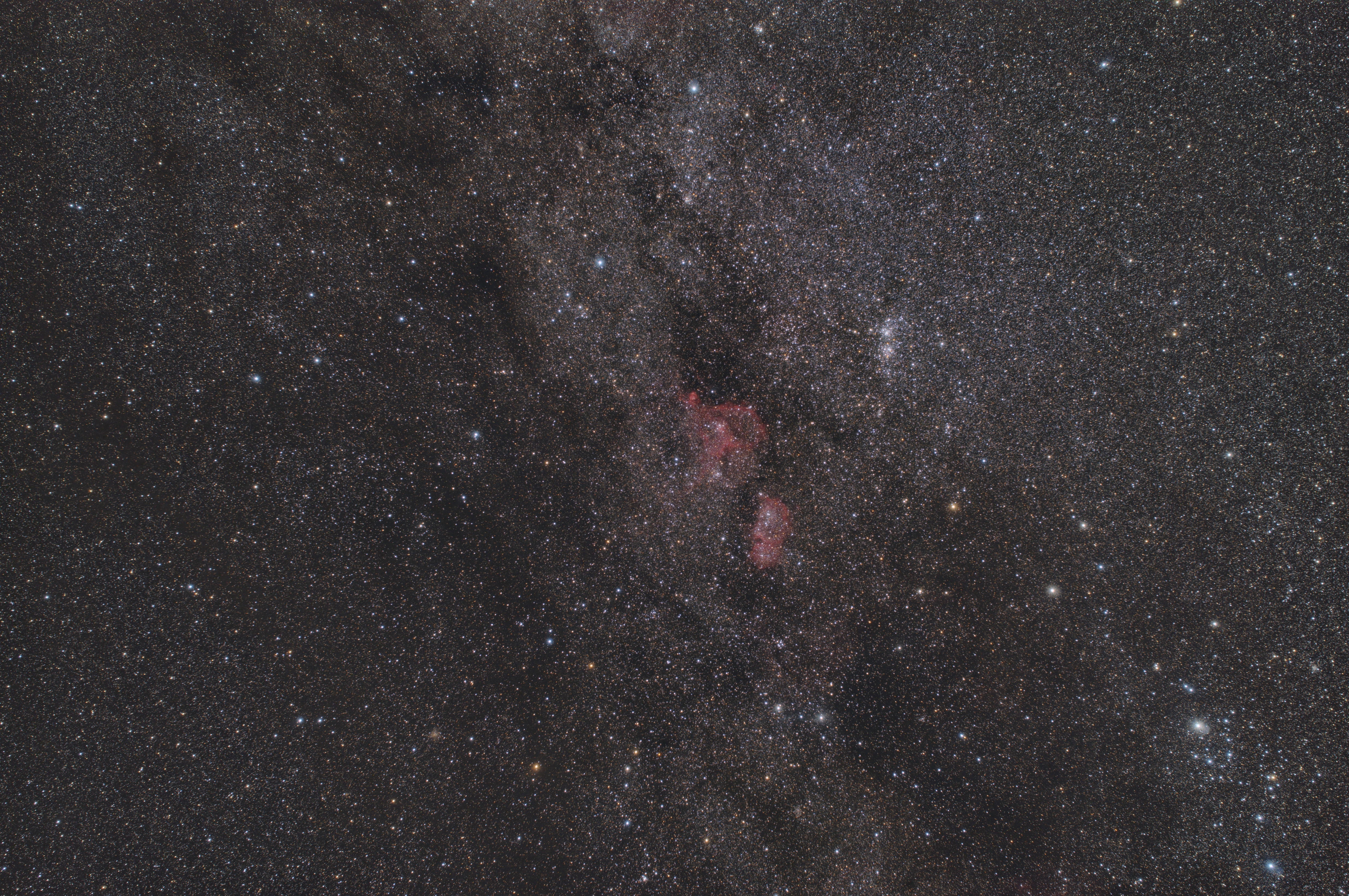
Cassiopeia on the Heart and Soul Nebula.
Follow Me on Instagram | Astrobin
Equipment:
Celestron CGEM Mount
Voigtlander Ultron 40mm f2 at f5.6
asi071mc PRO at -15 C
Astronomiks L3 UV/IR filter
Manually Focused in NINA with the assistance of the Aberration Inspector and looping exposures.
Acquisition:
- 153x6m Exposures
- Total time: 15:18
- Nights Imaged: 4
- Started: 2022-10-17
- Latest: 2022-10-20
| Date | L3 |
|---|---|
| 2022-10-17 | 2:48 |
| 2022-10-18 | 3:24 |
| 2022-10-19 | 5:36 |
| 2022-10-20 | 3:30 |
| Totals | 15:18 |
Session sequenced using Nighttime Imaging in Astronomy: N.I.N.A
All pre-processing and post-processing was done in PixInsight.
The resulting image is a combination of the following steps:
Inspected all subs for bad images with Blink, discarding subs containing clouds
Calibrated all subs with a master flat and master dark
Used subframe selector to weight all images using PSF Signal Weight
Selected the best sub from subframe selector and blink to use as a reference frame for aligning and integration
Calibrated (Darks, Flats, Dark Flats), Weighted and Aligned the best subs, tossing those with high clouds
Stacked the best 30 subs from the hightest altitude where minimum gradients existed and used as a Local Normalization reference
Applied local normalization to all 153x6m subs, then stacked using ESD and Large Scale Pixel Rejection
Drizzled 2x using CFA Drizzle
Performed a starless DBE to model the background, subtracting it from the full image
Generalized Hyberbolic Stretch:
Bring the black point in without clipping
Stretch in RGB mode using local intensity of 5 and stretch of 4
Stretch in Color mode using local intensity of -1 and stretch of 2.5
Stretch in Saturation mode using local intensity of -2 and stretch of 2.6
Created a contours based star mask then used erosion of morphological transform to reduce the impact of the stars
Ran deconvolution on the star cores
Additional GHS contrast based stretches in RGB and linear to bring the black point in further
Additional round of morphological transformation in selection selection to further reduce the impact of the stars
Increase contrast in medium and large scale features using Multiscale Median transformation, adjusting the Bias on wavelet layers 6-12 with a star mask in place
Chrominance Noise reduction using ACDNR on the dark regions
An ICC Profile was applied to enable Black Point Compensation
Constructive criticism is welcome. Let me know what you think! How can I improve?